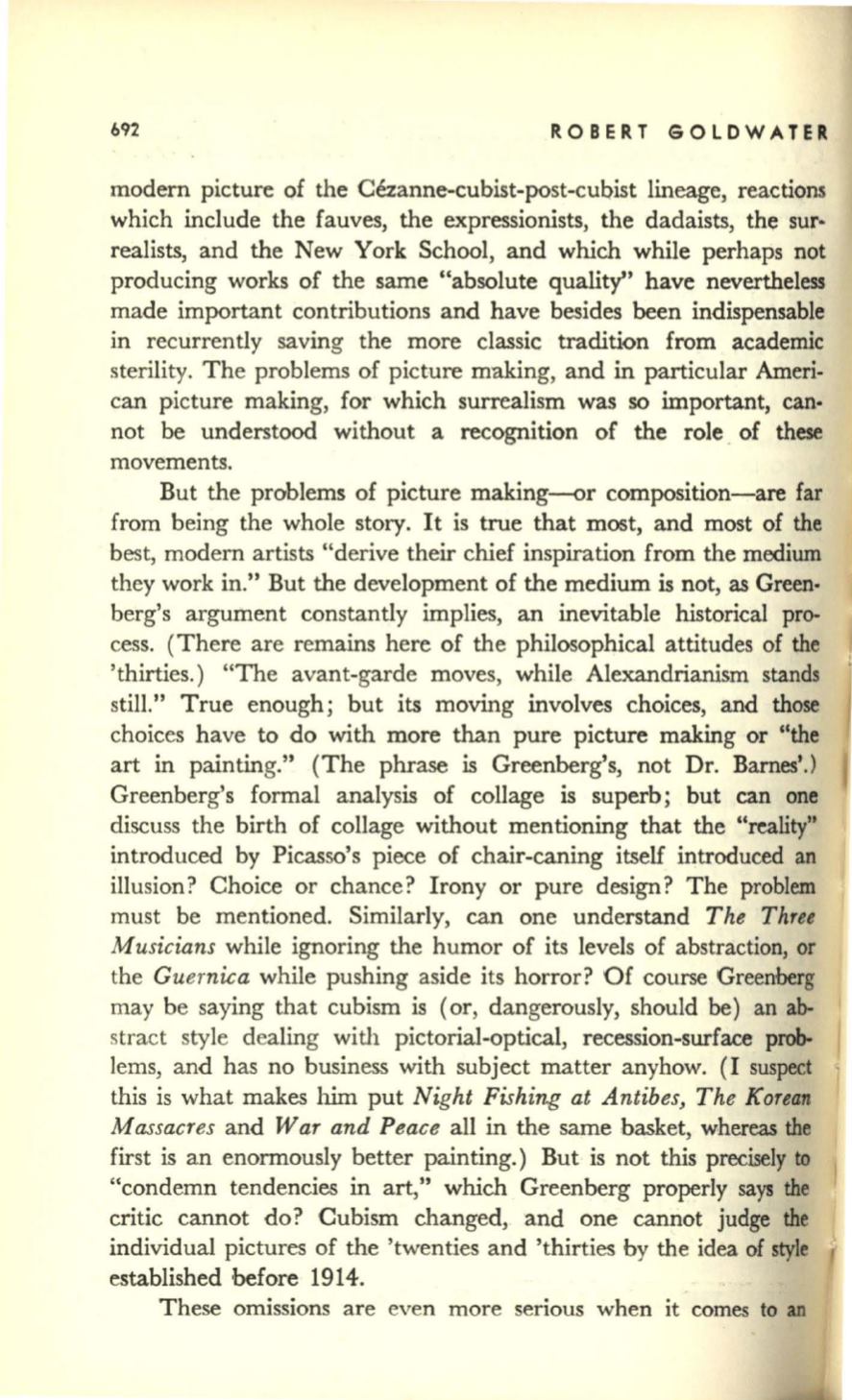
692
ROBERT GOLDWATER
modern picture of the Cezanne-cubist-post-cubist lineage, reactioJlli
which include the fauves, the expressionists, the dadaists, the sur·
realists, and the New York School, and which while perhaps not
producing works of the same "absolute quality" have nevertheless
made important contributions and have besides been indispensable
in recurrently saving the more classic tradition from academic
sterility. The problems of picture making, and in particular Ameri–
can picture making, for which surrealism was so important,
can·
not be understood without a recognition of the role of these
movements.
But the problems of picture making-or composition-are far
from being the whole story. It is true that most, and most of the
best, modern artists "derive their chief inspiration from the medium
they work in." But the development of the medium is not, as Green–
berg's argument constantly implies, an inevitable historical pro–
cess. (There are remains here of the philosophical attitudes of the
' thirties.) "The avant-garde moves, while Alexandrianism stands
still." True enough; but its moving involves choices, and those
choices have to do with more than pure picture making or "the
art in painting." (The phrase is Greenberg's, not Dr. Barnes'')
Greenberg's formal analysis of collage is superb; but can one
discuss the birth of collage without mentioning that the
"reality"
introduced by Picasso's piece of chair-caning itself introduced an
illusion? Choice or chance? Irony or pure design? The problem
must be mentioned. Similarly, can one understand
The Three
Musicians
while ignoring the humor of its levels of abstraction, or
the
Guernica
while pushing aside its horror? Of course Greenberg
may be saying that cubism is (or, dangerously, should
be)
an
ab–
stract style dealing with pictorial-optical, recession-surface prob–
lems, and has no business with subject matter anyhow. (I suspect
this is what makes
him
put
Night Fishing at Antibes, The Koretz1l
Massacres
and
War and Peace
all
in
the same basket, whereas the
first is an enormously better painting.) But is not this precisely
to
"condemn tendencies
in
art," which Greenberg properly
says
the
critic cannot do? Cubism changed, and one cannot judge
the
individual pictures of the 'twenties and 'thirties by the idea of style
established before 1914.
These omissions are even more serious when it comes to
an


